5. Second-by-second Adjustment
What did you find difficult, as chief programmer, Aramaki-san?
All sorts of things, but as you can imagine, there was a lot of trial and error involved with making the game controllable with just one Wii Remote. Every time a new member of staff would join the project, they’d inevitably ask ‘why aren’t we using the Nunchuk?’ Of course, there are only a few buttons that can be used on just one Wii Remote, so we had many, many button meetings about how Samus’s diverse movements should be controlled.
You had button meetings?
We did. As a result of those meetings we’ve been able to create a game that will be easy for everyone to play, where diverse movements can be performed despite only using a few buttons. Also, there were quite a lot of programmers working on this project, and everyone felt ‘let’s try making a better game’, so the project rapidly swelled with ideas. They weren’t just programming what they were told to, every one of them would also construct various things on their own in order to try and make the game more fun.
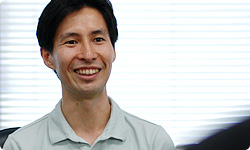
So even though they were programmers, they would think of their own ideas and actually try constructing them?
That’s right. I think they slightly overdid it, however, and I felt we were rather flooded with ideas. There was a lot of trial and error on this project, experimenting with how to record these ideas and how we could fit them into the game.
It must have been difficult because you couldn’t just flatly refuse things that had been created in good faith.
Exactly. The capacity of the Wii discs was also an issue. At first I thought we’d easily be able to fit everything onto one dual-layer Wii disc. Then however, there were all sorts of additions upon additions...
The amount of cinematics steadily increased, too.
Oh yes! (laughs) Everyone kept adding the things they wanted, so that the discs got chock-full in the end. We were at a level where we were converting the amount of space left on a disc into cinematic length and saying ‘if it’s a few more seconds, it will fit’. Even I was surprised at this.
When I was told ‘the game is barely fitting onto a dual-layer disc’, I must admit I thought it was a joke for a moment! (laughs)
It was a really close call in the end. When I said: ‘We can only fit a few more minutes of cinematics’, Sakamoto-san would count the seconds as he edited the cinematics himself. He’d say things like ‘I’ve shaved off two seconds here, so it’ll be fine, right?’. (laughs)
Ha ha! (laughs)
We really were making adjustments of seconds at the end.
We did manage to get everything on there, though.
I was really glad that everything fit.
Sakamoto-san was so obsessed with this project that he was even counting seconds, it seems. A little bit of perseverance can make a big difference to the value of a project that lasts eighteen months or two years. Having said that, persevering on all fronts will mean a project will never be finished, so it’s a matter of balance.
That’s something I felt very strongly. As the one who’d been entrusted with the visual specifications of this Metroid game...
Morisawa-san, you’re the one who created the documents to specify the visuals of Metroid and distributed them to Team NINJA as well as to Kitaura-san, Nagasawa-san and others in charge of the cinematics, aren’t you?
That’s right. I produced a huge volume of documents, the stack was as thick as several phone books.
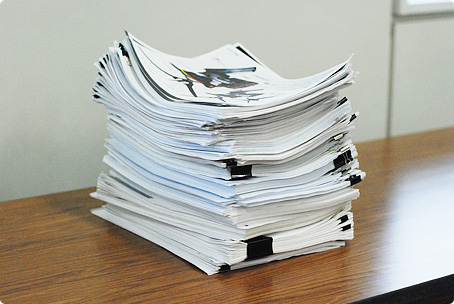
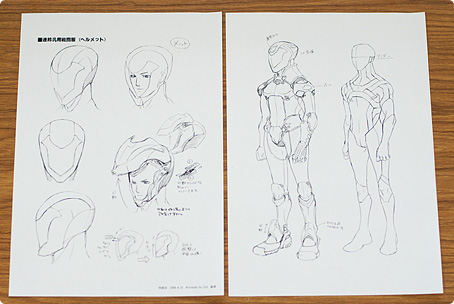
This was because I was asked an awful lot of questions. ‘What material is Samus’s clothing made from? Cotton?’; ‘Are the buttons on her clothing plated?; ‘How wide should this field be?’ and so on.
I suppose this is because the material of the clothes would be rendered in the cinematics too. Was deciding on the answers to questions like that mostly your responsibility, Morisawa-san? Could you decide without consulting Sakamoto-san?
For the most part, it was left to my responsibility, but there were points on which Sakamoto-san would definitely not budge. An example that made quite an impression on me was Samus’s Power Suit, and the way it changes colour as its various abilities are unlocked.
Ah yes, it changes.
At first it’s yellow, then the typical orange, then finally it becomes the Gravity Suit, so that Samus is purple. That is Nintendo’s official specification, so naturally we started making the final Power Suit in purple. Towards the end of the game, however, there are some serious dramatic scenes. As Sakamoto-san was watching one of these cinematics, where Samus appeared in purple, he said ‘why is Samus wearing purple?’
He said that, even though it had been the specification from the very beginning! (laughs)
Yes! (laughs) So I told him ‘she’s wearing the Gravity Suit, that’s why she’s purple’. His response, however, was ‘but it looks strange to have this purple person popping up during such a serious conversation’. It would then become an exchange along the lines of me saying ‘But this is the specification!’ and him responding ‘No, no, definitely strange’.
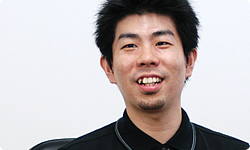
Ha ha! (laughs)
So we’d consult Kitaura-san as well, but he’d also say ‘yes, purple really is strange’. All I could think was ‘Huh?! So what should we do now?’. These kinds of specifications had been there from the very beginning, from before my time, but they’d just say ‘No, we definitely want Samus in orange here’. I just groaned and put my head in my hands.
It sounds like you had the ladder pulled out from under you. (laughs) So how did you resolve the situation?
Basically, I brought out various colour patterns, trying to push them back towards purple a little bit, but they couldn’t agree to that, saying it was orange they wanted. In the end, therefore, we decided to indicate that the gravity features are attached to the suit by making the green lights on Samus’s chest glow a purple-like pink when the gravity features are unlocked.
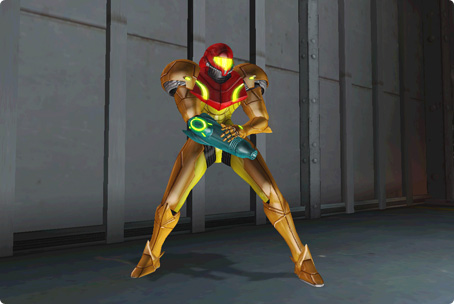
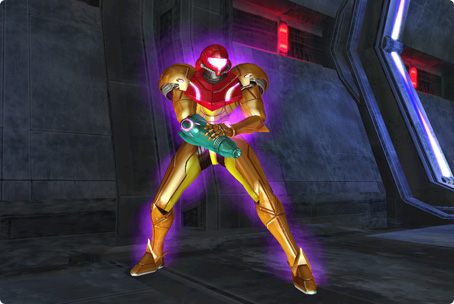
So in other words, the suit colour stayed orange, but the colour of the lights on her chest changed to a purplish pink?
Yes. We explained this clearly in the manual, but as the person entrusted with the visual specifications of Metroid, it just didn’t sit right with me. Then later I remembered working on Metroid for the Game Boy Advance in the past. At that time one member of staff came to me and said ‘the specifications for the previous game say this, but this time it’s a little different, is it ok?’ That time I was the one who’d gone against the specifications. That’s when I thought the Metroid titles were like the sauce at a long-standing eel restaurant...
Sauce...? (laughs)
Yes. When you go to an eel restaurant they say things like ‘our sauce is over 100 years old’. But this doesn’t mean the sauce has stayed untouched in the pot for 100 years. They’re constantly adding new sauce to their pot, matching the tastes of the age, and I think the flavour of the sauce changes quite often.
So by using this theory that it’s OK to change things little-by-little, much like the ‘100-year-old sauce’, you were able to make yourself agree to changing the game.
Yes, I was able to agree... Or rather, I could put myself in a position to understand it... (laughs). Well, even though I try to protect tradition, I think it’s important to be able to create new things without being tied down by it.
It’s certainly true that as specifications become more detailed, they become more fixed, and you sometimes end up trapped, unable to move. In this sense the development of the Mario titles is two-sided in its character, one side which is really open-minded, and one which is really strict. If we had got rid of the open-minded side of the Mario titles, it would gradually have become stricter and we would never have got the Mario we have now... Though it’s still tough to have the ladder pulled out from under you.
It really is! (laughs)
